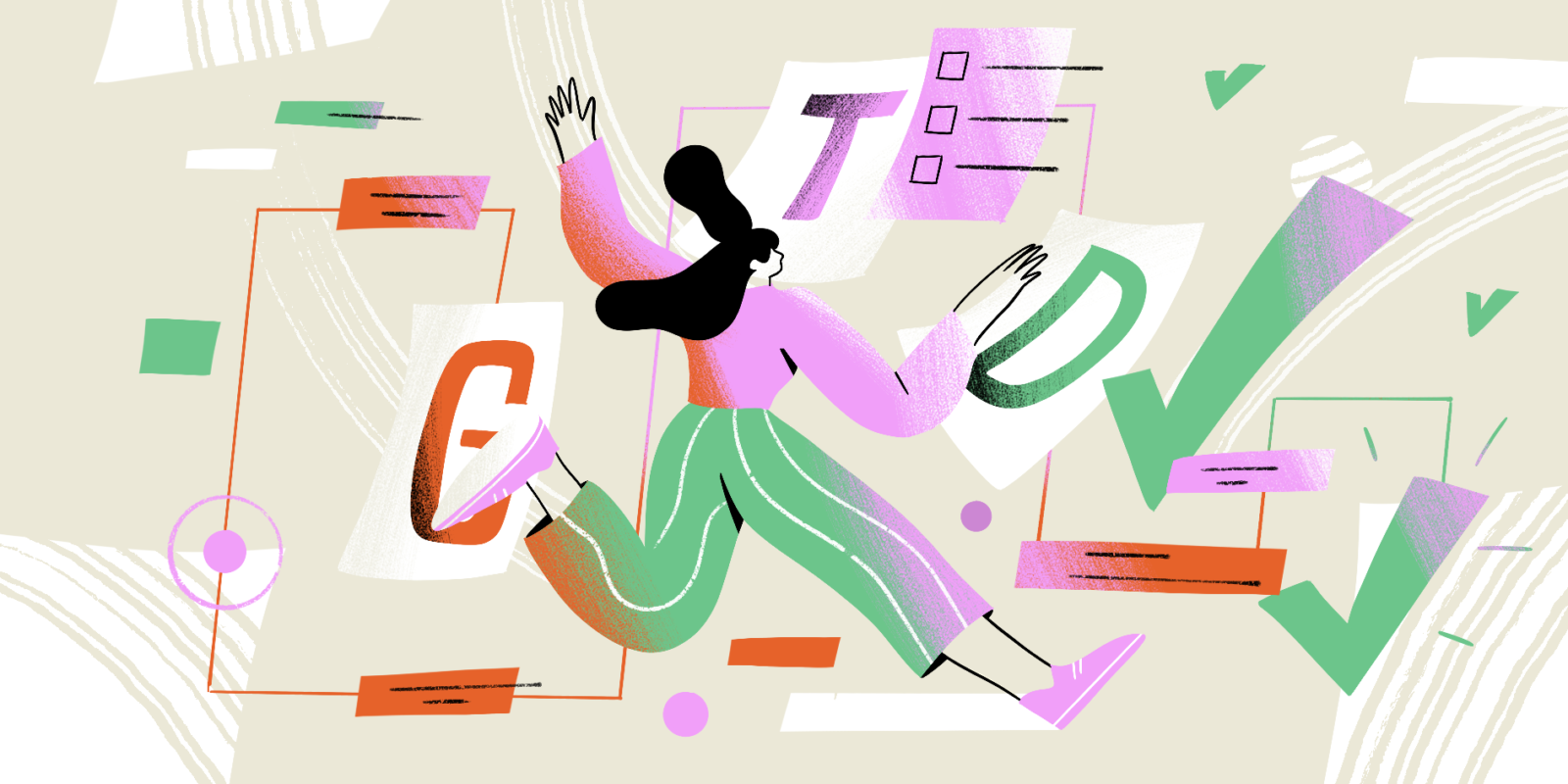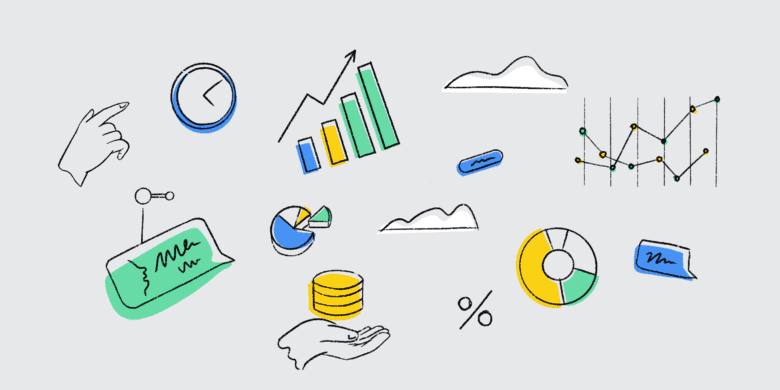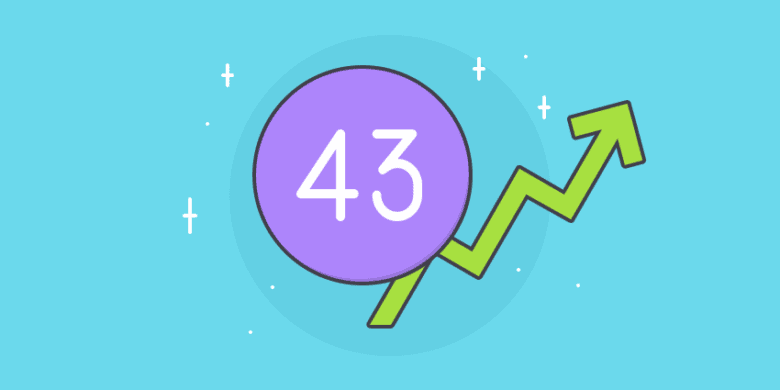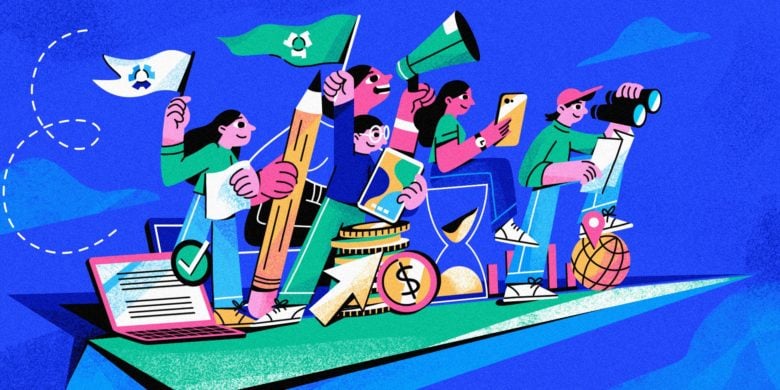Thousands of people worldwide use David Allen’s Getting Things Done (GTD) method to better organize and track their projects and tasks. But GTD is more than checking off a to-do list — it also helps you accomplish your goals more efficiently and with greater focus.
Getting Things Done is an excellent personal and team task management system if you want to get everything done with precision or if you regularly context switch between different types of work. And as counterintuitive as it may sound, Allen’s methodology is effective even if you’re overwhelmed by extensive project lists.
The GTD method follows five steps to help systematize the information in your brain. These steps are:
- Capture
- Clarify
- Organize
- Reflect
- Engage
The modern business ecosystem is continuously evolving and is very competitive. There’s absolutely no room for inefficiency. GTD is a significant first step to increasing productivity, but you must pair it with a reliable productivity tool. Let’s explore these tools in the rest of this article.
Boost your team’s efficiency with Hubstaff's productivity tools
1. Hubstaff Tasks
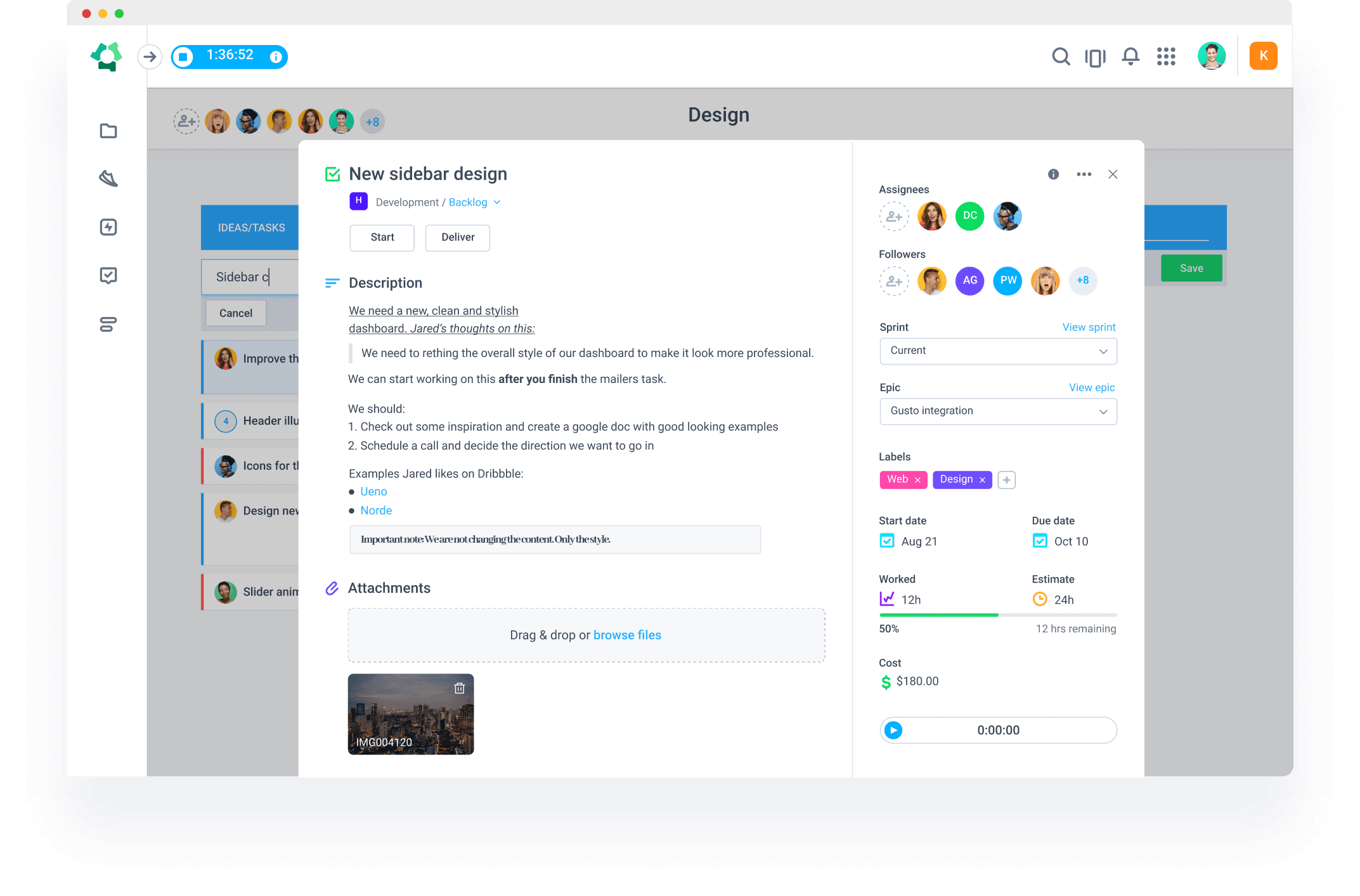
Hubstaff Tasks offers a rich project management feature set that lets you execute all five stages of GTD effectively. It’s built on an intuitive, easy-to-navigate Kanban interface, meaning you can start getting things done immediately.
Here’s how Hubstaff Tasks simplifies the Getting Things Done method:
- Capture: Create tasks in only a few clicks to store your ideas.
- Clarify: Define requirements and identify the next steps by creating checklists and tags.
- Organize: Move tasks through different project stages, folders, and iterations.
- Reflect: Easily revisit to-dos with Hubstaff Tasks’ friendly UI. You can also jump straight to active or archived tasks with the search function.
- Engage: Accomplish tasks by assigning people, setting deadlines, and communicating in the comments sections.
Want to see a bigger picture? Zoom out with Hubstaff Tasks’s Timelines feature. See ongoing projects and who’s in charge of each one so you can gauge overall project health.
While Hubstaff Tasks is a well-rounded app on its own, it also integrates seamlessly with Hubstaff, a complete productivity platform with time tracking, reporting, employee experience, and workforce management capabilities.
Accurately track time to your to-dos, automate employee payroll, and understand your team’s performance with the Insights add-on’s advanced activity metrics.
Pricing
- Free: 5 users, 10 projects, and 100 MB of storage per user.
- Premium: $5/user per month. Unlimited users and projects, 5 GB of storage per user, and all features.
Visit the pricing page for more information.
2. Nirvana
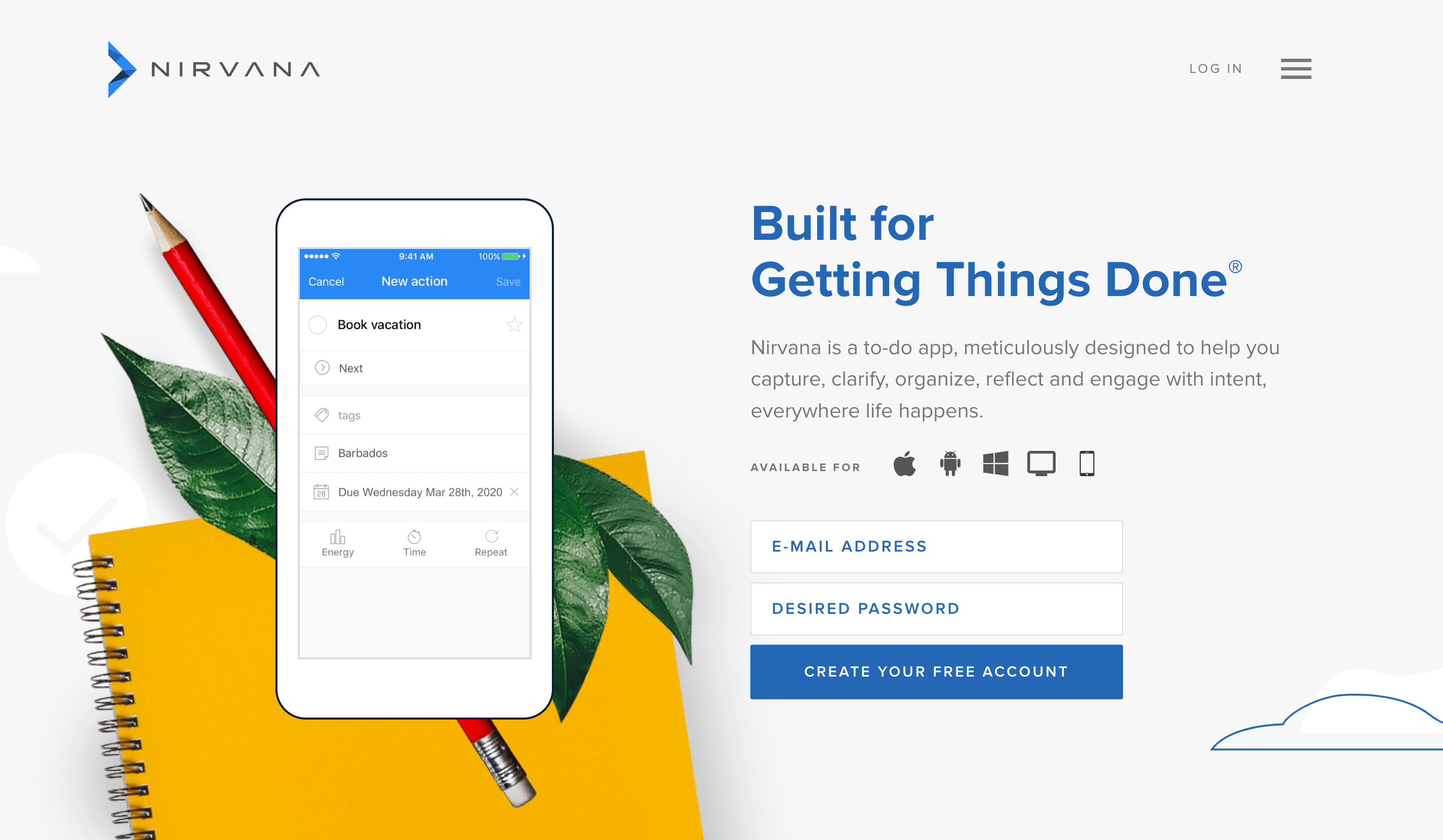
Nirvana is a simple to-do list app built with GTD in mind. Its features are centered around the five steps of the methodology and are tailored for both professional and personal use cases.
The app enables users to systematically approach their to-do lists without encountering distracting UI elements. With Nirvana, you can:
- Create and assign tags to your to-dos so you can filter them later.
- Add notes, set due dates, and schedule recurring tasks.
- Automatically create tasks by sending an email to your Nirvana account.
- Create custom task views called “Areas.”
Nirvana works on desktop and mobile devices, allowing you to keep your to-do list updated wherever you go. It isn’t built for teams, though. You can’t tackle projects or tasks with a collaborator, but it nevertheless excels at being a personal, GTD-inspired task management tool.
Pricing
- Free: 1 user only.
- Pro: $5/user per month. Unlimited areas, unlimited projects, and recurring tasks.
3. Todoist
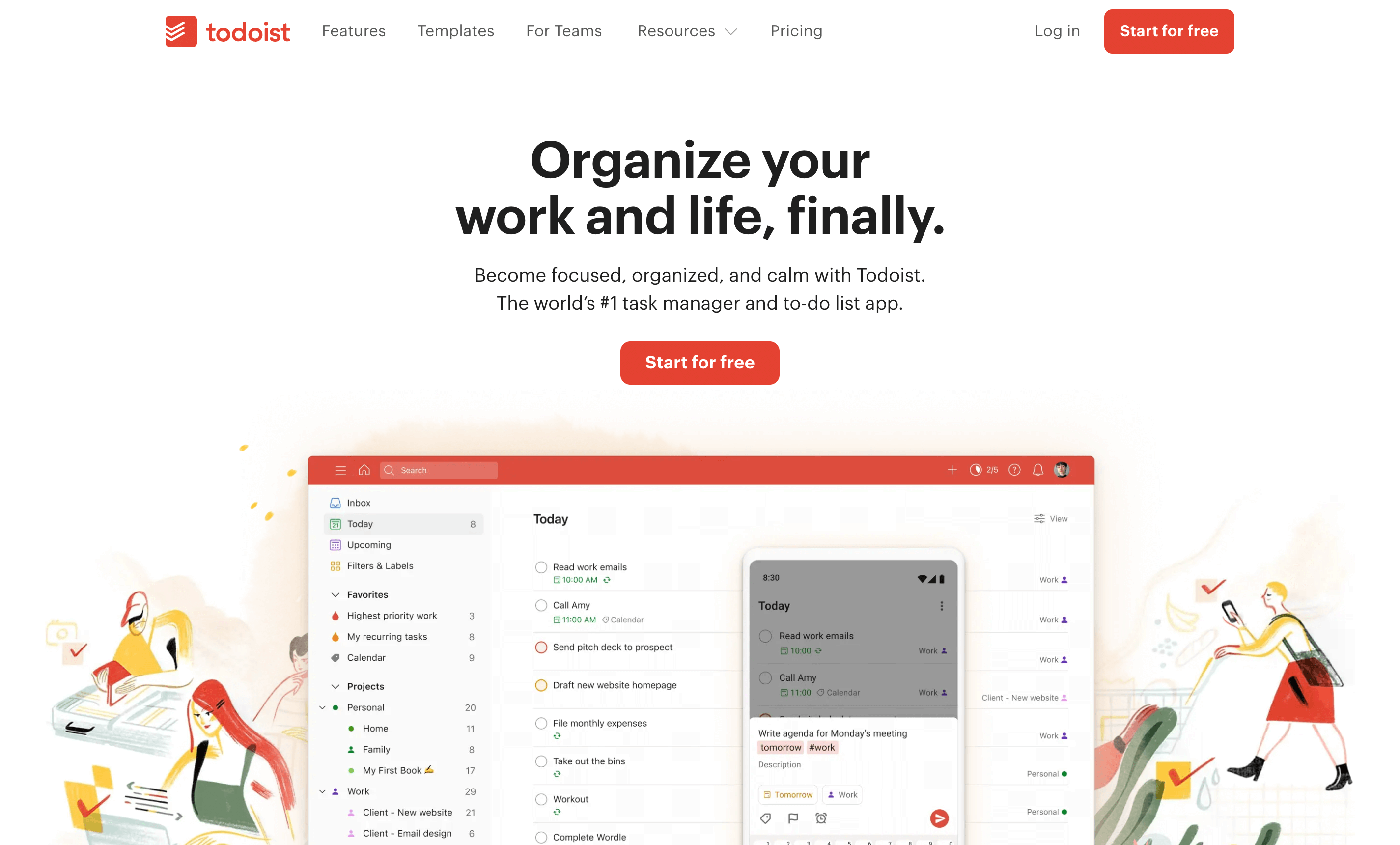
Many users love Todoist because it offers the same experience of checking off items in a to-do list while including smart features that transform these lists into productive workflows.
Todoist is unique because it operates like a straightforward to-do list app despite having a ton of advanced features under the hood. It isn’t intimidating to get into despite having several task management capabilities, such as:
- Project boards for better organization and planning.
- Due dates and reminders to help you stay on top of everything.
- Priority levels to ensure that important tasks are being completed.
- Subtasks and project sharing for efficient collaboration and delegation.
- Filter views to find and focus on specific tasks.
What sets Todoist apart from other to-do list apps is its productivity tools. The app shows you overviews of your daily progress and productivity trends so you know when you’re having a solid week or if you need to step it up.
Pricing
- Free: 5 active projects and 5 collaborators per project.
- Pro: $5/user per month. 300 active projects, 25 collaborators per project, reminders, and unlimited activity history.
- Business: $8/user per month. 500 active projects per member, 50 people per project, team inbox, and team billing.
5. Asana
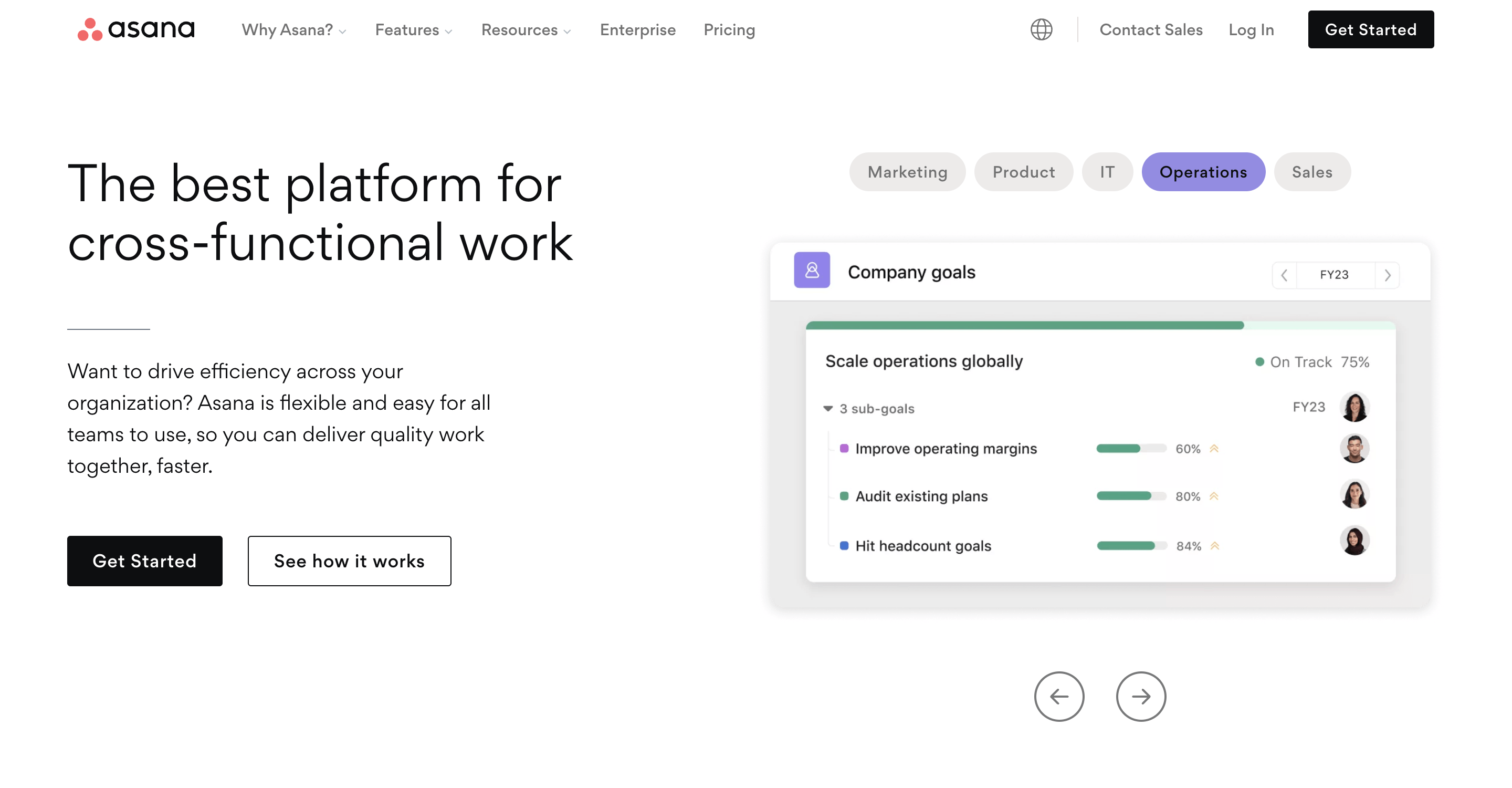
Asana is a project management platform with many features that make it a reliable tool, whether or not GTD is your preferred task management method. Its multiple project views provide a 360-degree view of your projects so you can schedule and delegate tasks effectively.
Asana lets you:
- Create and manage tasks on a Kanban board.
- View reports on your team’s progress.
- Communicate within tasks, projects, or directly with teammates.
- Build automated workflows to ensure that projects proceed as planned.
- See your team’s workload so you can accurately estimate your current bandwidth.
The app’s abundance of features makes it excellent for team collaboration, but it may also be daunting to people new to task management platforms or methods. Other apps may be easier to get into if you just want the fundamentals of GTD.
Asana integrates with several communication, file-sharing, and productivity platforms. Like Hubstaff Tasks, you can integrate Asana with Hubstaff to synchronize your tasks and timesheets.
Pricing
- Basic: Free. Unlimited tasks and projects, multiple views, and integrations.
- Premium: $13.49/user per month. Timeline, Workflow Builder, unlimited free guests, and Rules.
- Business: $30.49/user per month. Portfolios, Goals, Workload, and advanced reporting.
6. Things
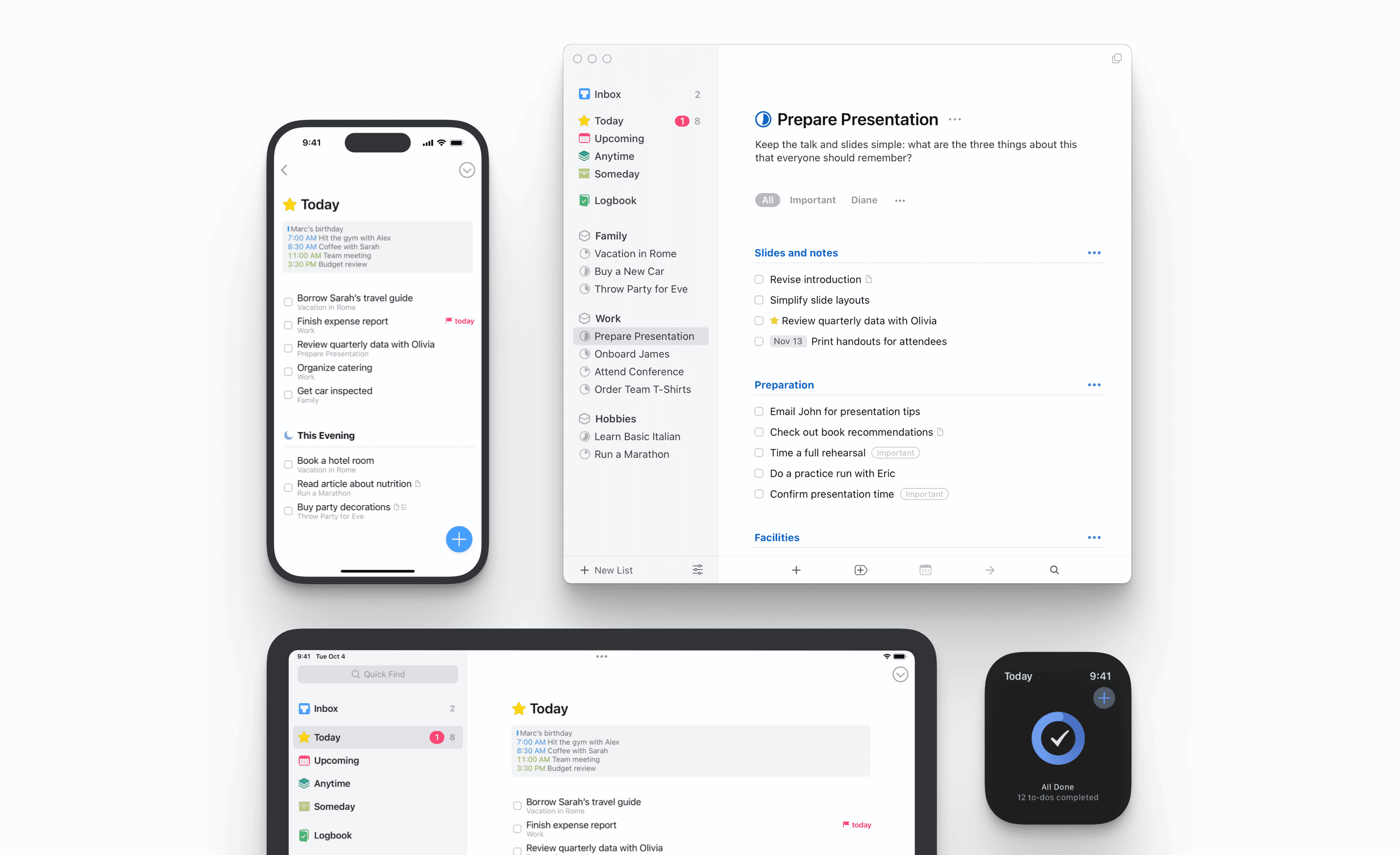
Things is a minimalistic task management app specifically built for the Apple ecosystem. Comparatively speaking, it doesn’t offer a lot of features. Instead, it focuses on providing an accessible gateway to the goal GTD was created for to achieve quality work.
With Things, you can:
- Create lists and tasks with one click.
- Build, organize, and add deadlines in checklists.
- Create Areas for different types of work (e.g., work, school, personal, etc.)
- Assign tags to tasks for more efficient planning and navigation.
The app also includes iOS and macOS widgets, allowing users to integrate it into their daily lives seamlessly. They won’t have to think about opening an app to do their work.
With that said, Things doesn’t have a web app. It offers a unique task management experience that’s truly iOS and macOS-native — it even has an Apple Watch app. But if you don’t have an Apple device, you won’t be able to use Things.
Additionally, Things doesn’t offer a free plan. However, you can buy their apps with one-time purchases, which may appeal to users averse to subscription-based models.
Pricing
- macOS: One-time purchase of $49.99.
- iOS: One-time purchase of $9.99.
- iPad OS: One-time purchase of $19.99.
7. Microsoft Outlook
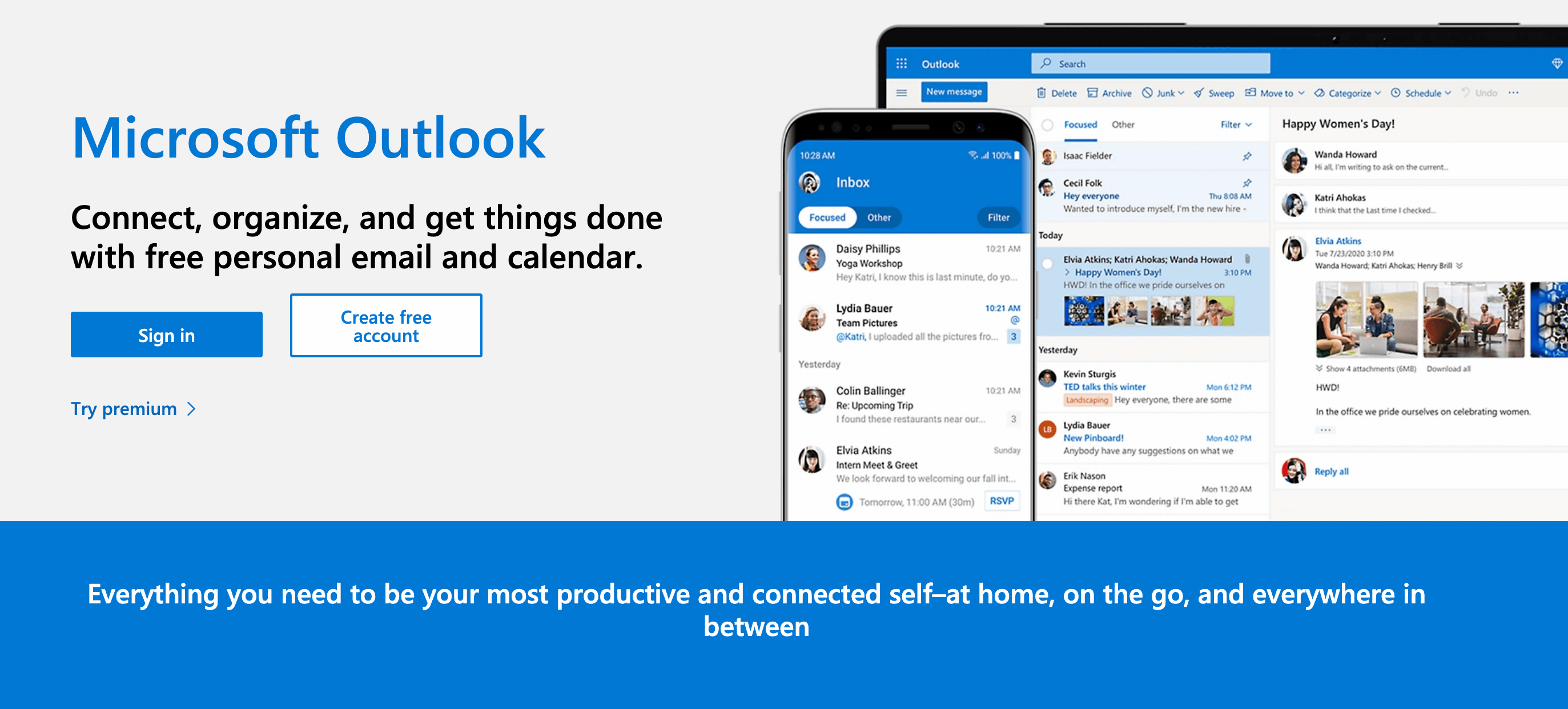
Despite being practically ubiquitous for Windows users, very few people consider Microsoft Outlook when discussing Getting Things Done apps. However, if you are a Microsoft Office user and want to get started with GTD, Outlook is worth looking into.
In addition to Outlook’s standard email capabilities, it also lets you:
- Create lists and tasks in the same window you access your emails.
- Set start dates, due dates, and priority levels for assignments.
- Add categories and flags to tasks.
Microsoft Outlook can be more accurately described as an email management app with to-do list capabilities. Users familiar with bespoke to-do applications like Todoist may find it lacking and, to an extent, clunky.
However, it’s more than serviceable. If the Microsoft tech stack plays a huge role in your workflow, there’s a strong benefit to having your task list on the same platform.
Pricing
Tasks are included by default in Microsoft Outlook and are completely free.
Final thoughts
The Getting Things Done apps we discussed will help you execute the productivity technique like a pro, but depending on your circumstances, some apps will be better than others.
Do you intend to use GTD exclusively for work, personal purposes, or a mix of both? Will you use it alone, or are you working with a team?
Consider these factors, and use free trials whenever possible. Once you get accustomed to GTD and the app you decide on, productivity will come naturally.
Subscribe to the Hubstaff blog for more posts like this
Be the first to know when we publish content about productivity.
Most popular
The Critical Role of Employee Monitoring and Workplace Security
Why do we need employee monitoring and workplace security? Companies had to adapt fast when the world shifted to remote work...
15 Ways to Use AI in the Workforce
Whether through AI-powered project management, strategic planning, or simply automating simple admin work, we’ve seen a dramatic...
The AI Productivity Panel: Lessons From Leaders on What’s Working (and What’s Not)
When I moderated this AI productivity panel, I expected a solid conversation. What I didn’t expect was the flood of real-world i...
Employee Performance Dashboards: Templates, Tools, and Best Practices
Keeping track of how your team’s really doing can be tricky. Spreadsheets pile up, one-on-ones only tell part of the story, and...
